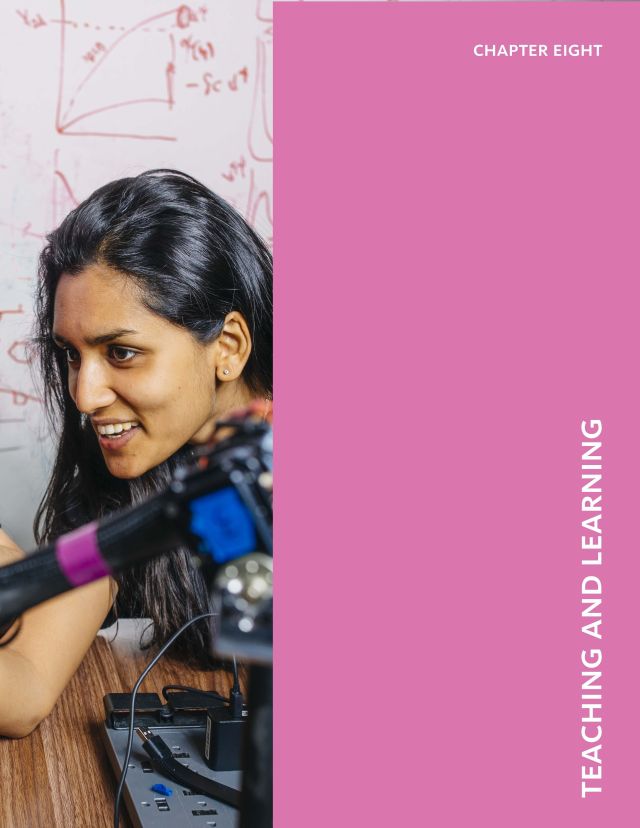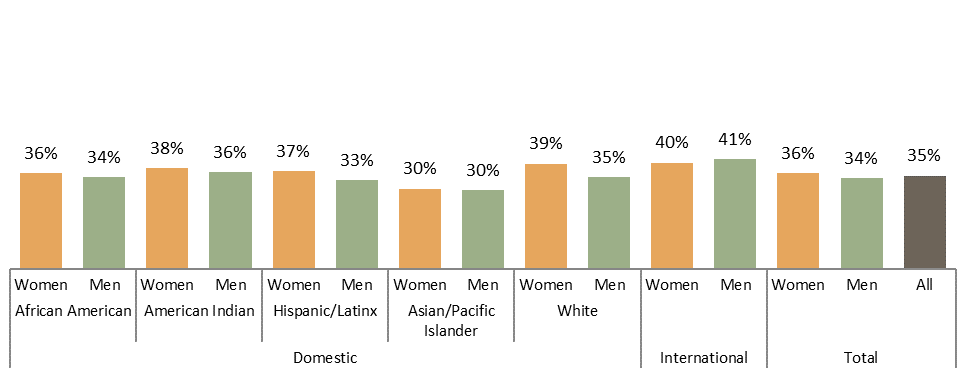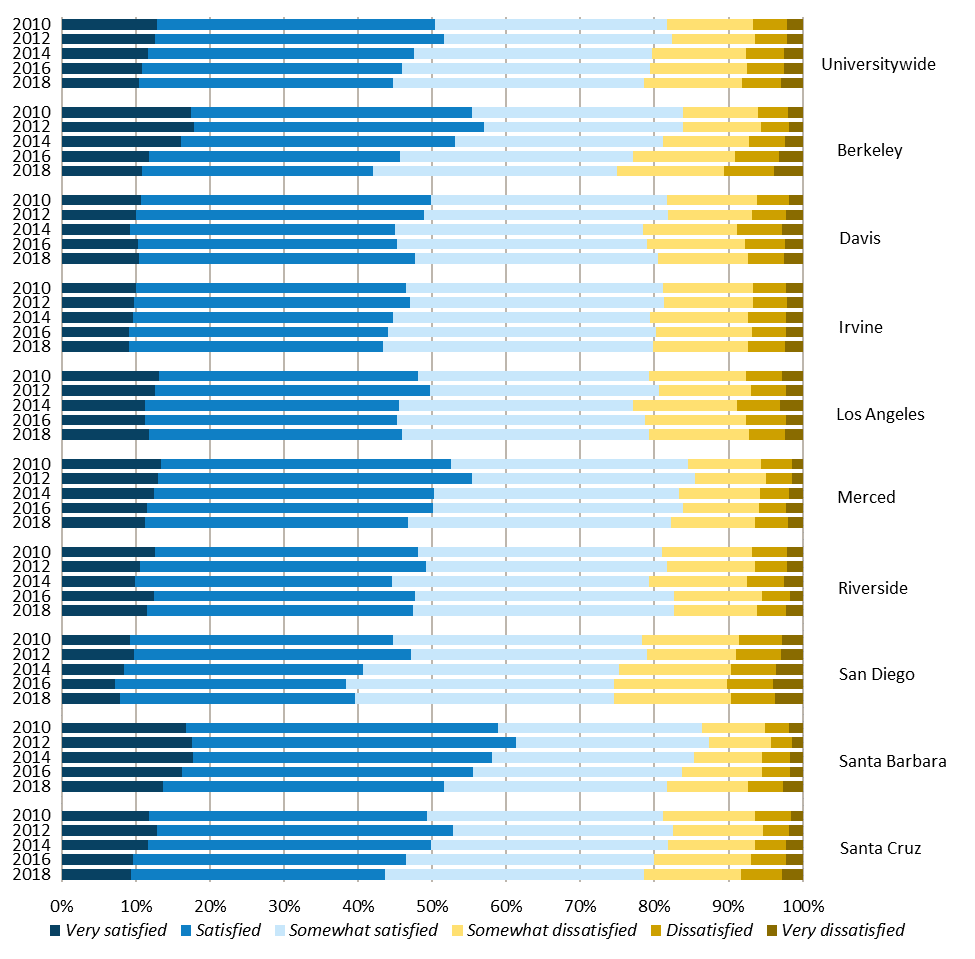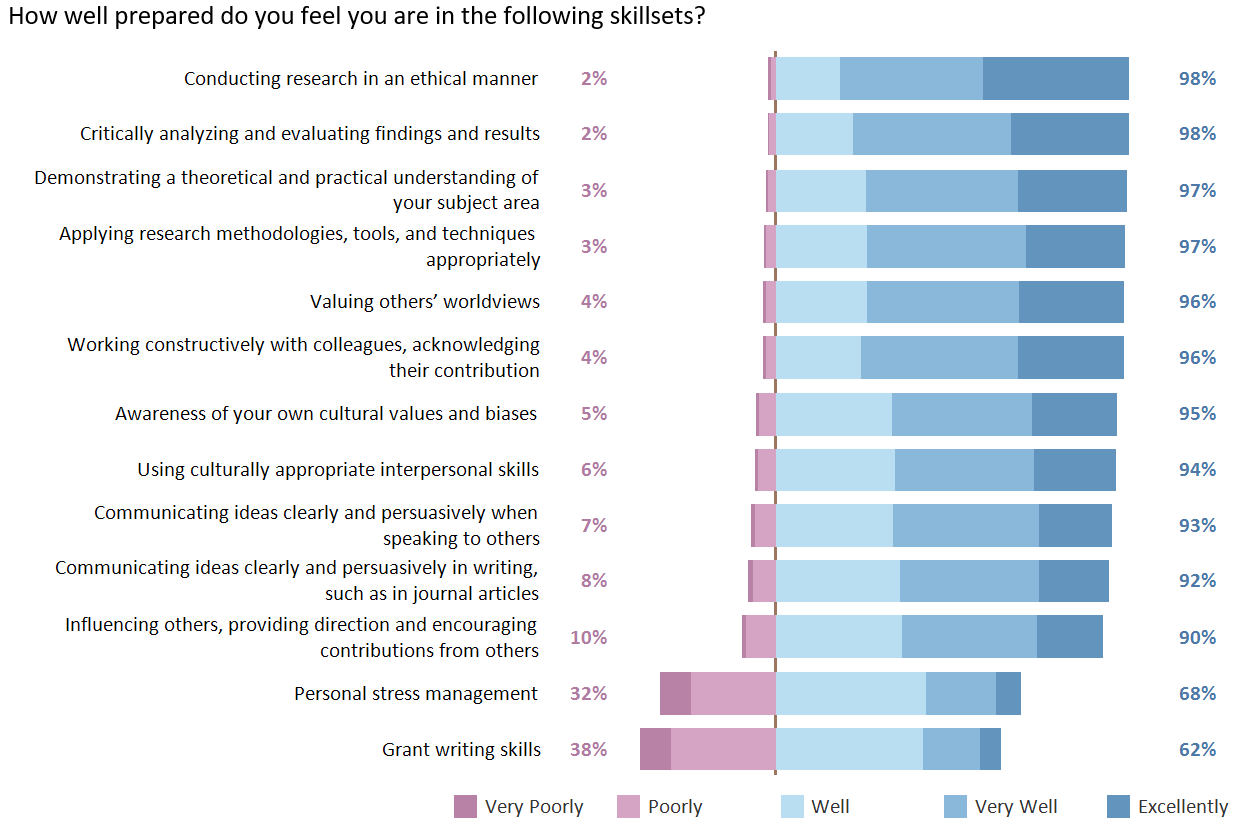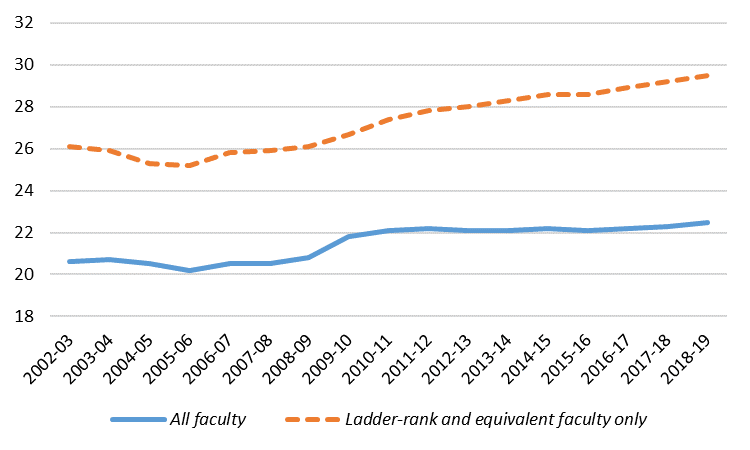Overview
The University of California provides its students with a rich learning environment created by faculty engaged in both teaching and academic research. Student learning at UC involves classes, seminars, and lab sections enhanced by collaboration with faculty and researchers. Through these activities, faculty and students engage in a learning process that helps develop critical thinking, communication, and problem-solving skills, as well as discipline-specific knowledge.
Educating students and the public
UC’s faculty are principally responsible for maintaining UC’s academic excellence and promoting student success. Student retention, graduation rates, and measures of effectiveness are presented in Chapter 3. This chapter focuses on the learning experience of UC’s undergraduate and graduate students, reporting what skills they have learned, their engagement with faculty and their peers, and satisfaction with their UC experience. A majority of both undergraduate and graduate students report improvement in academic skills. This chapter also reports on the composition and workload of instructional staff across different academic disciplines and professional programs.
Expanding learning opportunities beyond students on campus demonstrates the connection between the teaching and the public service missions of the University. UC Extension offers adult professional and continuing education programs to Californians and people around the world, enrolling hundreds of thousands of Californians in its programs each year.
Promoting educational effectiveness
UC is committed to continuous improvement of instruction and employs a range of pedagogical and assessment strategies to enhance and support student learning. Campuses offer pedagogical development and training for faculty and teaching assistants to promote the use of evidence-based teaching practices and improve the quality of teaching and learning. UC’s teaching and learning centers and offices of instructional development train hundreds of instructors each year, improving the quality of education for students in all disciplines across all ten campuses.
UC promotes educational effectiveness by supporting assessment of student learning. Assessment strategies include the development of program-level student learning outcomes and integration of evidence of student learning into academic program reviews. Programs across UC are undertaking curriculum redesign and improvement as a result of assessment work. Much of this aligns with the expectations of regional accrediting agencies, in particular the WASC Senior College and University Commission (WSCUC). As part of WSCUC accreditation, UC campuses assess five main core competencies of student learning: writing, oral communication, quantitative reasoning, information literacy, and critical thinking. Each UC campus posts its WSCUC accreditation reports online.
Innovative instructional offerings
UC faculty develop and teach an ever-expanding catalog of online courses and programs, expanding learning opportunities for UC and non-UC undergraduates, graduates, and professional students. Through the UC cross-campus enrollment system, UC provides undergraduates access to high-demand courses offered at other UC campuses, increasing flexibility and opportunities for degree completion.
For non-UC students considering matriculation at a four-year university or resuming their studies, UC offers for-credit online courses that may transfer to other colleges and universities. UC Online provides courses that span a wide range of disciplines. UC Extension offers online continuing education courses, professional certificates and post-baccalaureate programs for those seeking to advance their education and to enhance their professional skills.
In addition to online courses, UC leverages instructional technologies to enhance instruction and promote success. UC continues to develop and refine hybrid courses using multimedia resources, videos, podcasts, e-books, and other technology-based tools. UC follows best instructional practices to embed innovative technologies into course design and focuses on creating online and face-to-face learning experiences that encourage collaboration and maximize faculty-student and peer-to-peer interactions. Increasingly, UC courses utilize a flipped model of instruction, where lectures and other traditional classroom content are provided online, and classroom time is dedicated to group discussions, problem-solving activities, and other experiential exercises.
Ongoing assessment and data-driven approaches to teaching and learning are integral parts of UC’s use of technology. Several UC campuses have adopted assessment systems that use online conceptual models and adaptive learning tools to determine students’ knowledge quickly and accurately. Based on responses to questions, the software determines concepts or topics where each student needs to focus. Assessment and LEarning in Knowledge Spaces (ALEKS) uses web-based adaptive tools to provide students with individualized feedback and learning pathways in entry-level math and chemistry courses. As part of the 2015 state budget framework agreement, three UC campuses engaged in a pilot study of the impact of adaptive learning technologies on student success and as a mechanism to strengthen instruction. The primary finding of the study was that when students use adaptive learning technology as intended, results are positive in relation to a student’s overall performance in the course to which it is applied.
UC is enhancing student learning opportunities and success by expanding summer course offerings (in-person and online) to reduce students’ time to degree and enrich their academic experience. Offering bridge experiences and orientation during summer also helps incoming students transition to campus life and prepare them for the rigorous courses at the undergraduate level.
Looking forward
As a result of the COVID-19 pandemic, UC campuses shifted almost all of Spring 2020 courses to remote instruction. Over the next year, UC will be collecting data and research about learning outcomes during this period, along with the variation in curricular offering — including expanded online opportunities — for the upcoming year. Where possible, next year’s UC Accountability Report will include relevant findings.
For more information
Campus websites: universityofcalifornia.edu/uc-system/parts-of-uc
Summer enrollment: universityofcalifornia.edu/infocenter/summer-enrollment
UC Education Abroad Program: universityofcalifornia.edu/infocenter/uc-eap
Undergraduate research experiences: universityofcalifornia.edu/infocenter/uc-undergraduate-student-research
Adaptive Learning Technology Pilot Report: ucop.edu/institutional-research-academic-planning/_files/BFI-Adaptive-Learning-Technology-Report.pdf

